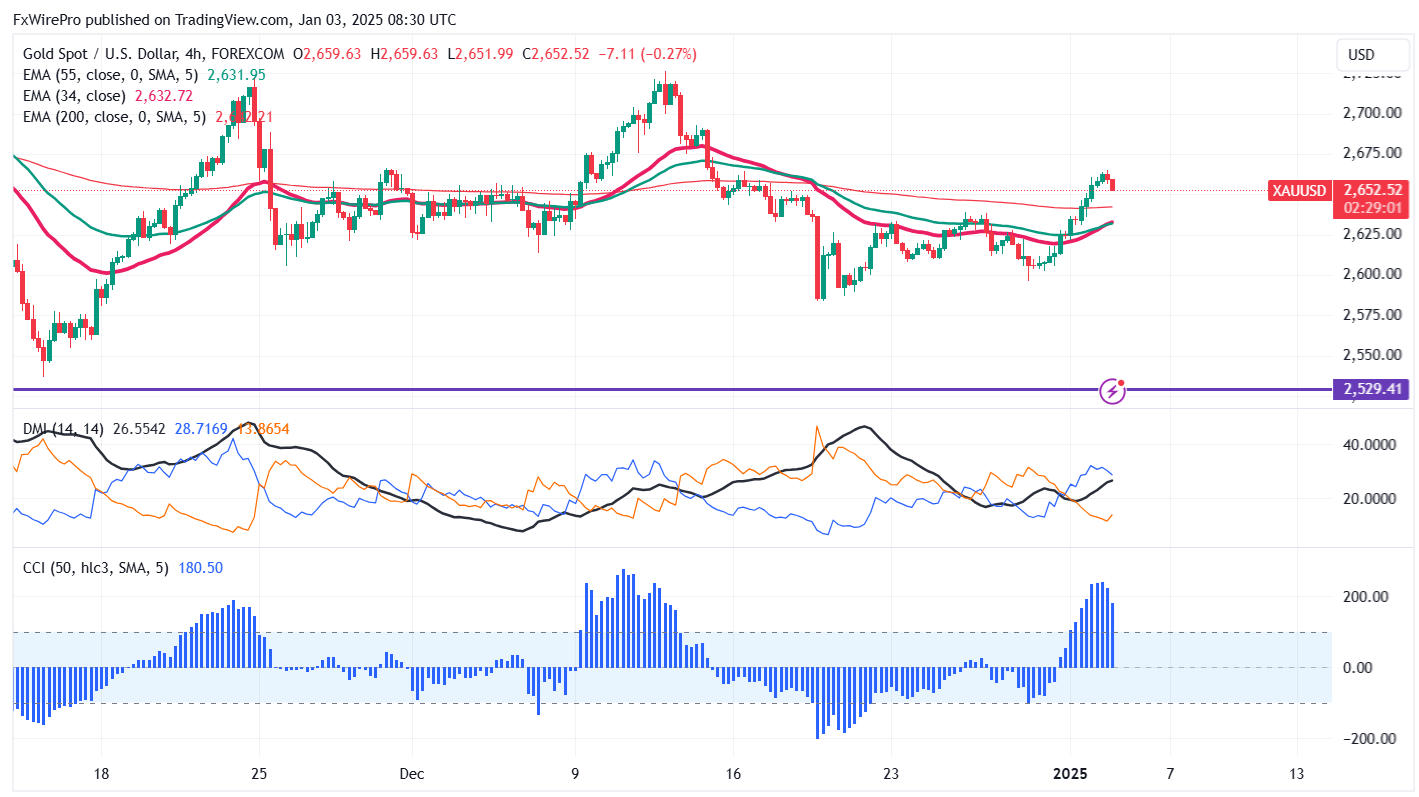Gold experienced a pullback amid concerns over U.S. tariffs, reaching an intraday high of $2,666 and currently trading around $2,653.
Inflation Threat from Proposed Tariffs
Donald Trump is planning to impose a 25% tariff on imports from Mexico and Canada and a 10-20% tariff on goods from China. This is likely to increase consumer prices in the U.S. The history of tariffs indicates that it has normally resulted in a price increase. For example, a 50% tariff on washing machines in 2018 pushed up the price by 12%. If implemented, the new tariffs would increase annual expenses for American consumers by $1,500 to $2,400. Experts fear that these tariffs could drive inflation up by one percentage point, which will disproportionately affect lower-income groups. Rising inflation may make more investors seek gold as a safer asset in times of economic uncertainty. Monitoring the interplay of tariffs, inflation, and market dynamics will be crucial in the near term.
Mixed Signals from the U.S. Economy
A recent mixed bag on the U.S. economy. Jobless claims fell, while manufacturing continues to struggle. In the week of December 28, initial jobless claims dipped by 9,000, to 211,000 -- the lowest number since April 2024, and better than expected. Labor market strength would be a decent interpretation, what with a four-week moving average of 223,250 fewer layoffs. Continued Reclaims tumbled to a three-month low of 1.84 million. In contrast, the final Manufacturing PMI for December 2024 was at 47.0, showing that this was a contracting environment from the November 48.0 value, whereas problems in demand and production continue to feature there. Labor remains robust, but manufacturing continues to be significantly pressured and thus is an example of some of the simplicity in the current economy.
Federal Reserve Rate Outlook
According to the CME FedWatch Tool, the likelihood of a Fed rate pause decreased to 88.80%, down from 89.30% a week earlier.
Gold Price Trends and Trading Strategy
Gold prices are currently above both short-term and long-term moving averages, suggesting a bullish trend. Immediate support is at $2,640; a break below this level could push prices down to $2,620, $2,600, $2,570, $2,559, $2,536, and $2,500. Near-term resistance is around $2,670, with potential targets at $2,700 and $2,775. A recommended trading strategy is to buy on dips around $2,630, set a stop-loss at $2,600, and aim for a target price of $2,725.



 Austria’s AA Credit Rating Affirmed as Fitch Highlights Stable Outlook
Austria’s AA Credit Rating Affirmed as Fitch Highlights Stable Outlook 



























